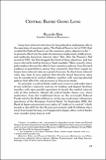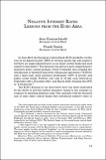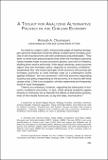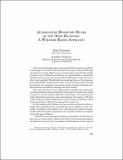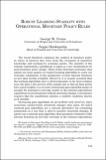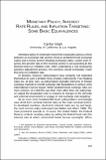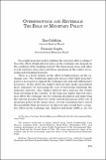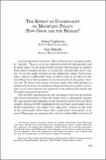Search
Now showing items 11-18 of 18
Central banks going long
Long-term interest rates have for long played an ambiguous role in the operation of monetary policy. The Federal Reserve Act of 1913 that created the Federal Reserve set the monetary policy objective to be: '... to promote effectively the goals of maximum employment stable prices and moderate long-term ...
Negative interest rates: lessons from the Euro area
In June 2014 the European Central Bank (ECB) decided to cut the rate on its deposit facility (DFR) by 10 basis points (bp) into negative territory an unprecedented move as no major central bank had used negative rates before. This decision was part of a more comprehensive monetary policy easing package ...
A toolkit for analyzing alternative policies in the chilean economy
As noted by Leeper (1995) “the business pages of leading newspapers give the impression that the effects of alternative monetary policies on the macroeconomy are well understood and predictable.” They tend “to write with great certainty that when the monetary authority raises interest rates it slows ...
Alternative monetary rules in the open-economy: a welfare-based approach
How do central banks choose among alternative monetary polocies? In this paper we analyze that question for an open economy following an interest rate rule. Many issues remain controversial in the design of such a rule. If inflation is targeted, as it presumably is, should the domestic interest rate ...
Robust learning stability with operational monetary policy rules
The recent literature examines the conduct of monetary policy in terms of interest rate rules from the viewpoint of imperfect knowledge and learning by economic agents. The stability of the rational expectations equilibrium is taken as a key desideratum for good monetary policy design. Most of this ...
Monetary policy, interest rate rules, and inflation targeting: some basic equivalences
Monetary policy in small open economies is typically cast as a choice between an exchange rate anchor (fixed or predetermined exchange rates) and a money anchor (floating exchange rates). Under such regimes, the growth rate of the nominal anchor is set according to the desired long-run inflation rate. ...
Overshootings and reversals: the role of monetary policy
Does tight monetary policy stabilize the currency after a collapse?. Does the effect of high interest rates on the exchange rate depend on the condition of the banking system? The East Asian crises and other recent currency crises have put these questions at the center of economic policymaking decisions.
The effect of uncertainty on monetary policy: how good are the brakes?
In most industrial countries, official interest rate changes tend to be 'smooth'. That is, rates are adjusted relatively infrequently and is small steps. Yet the path of interest rates that emerges as optimal from macroeconomic models is, in general, considerably more volatile. So are the paths of ...

